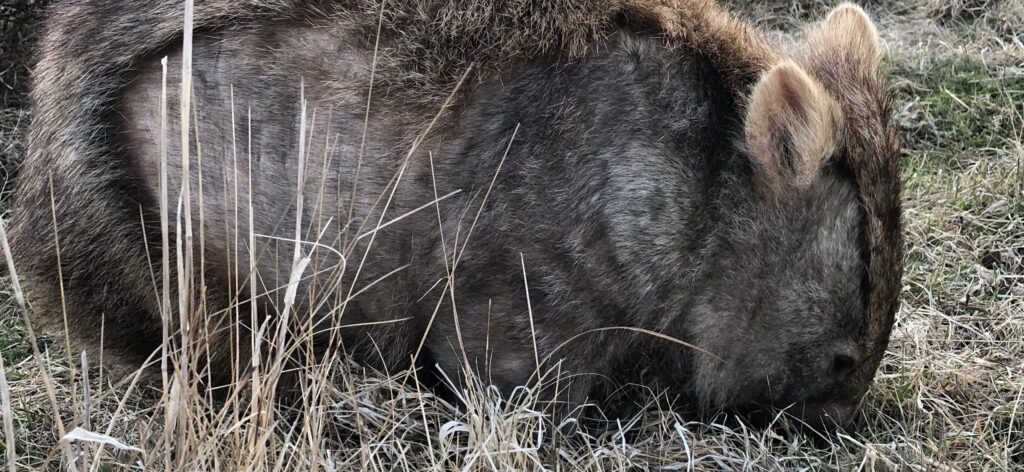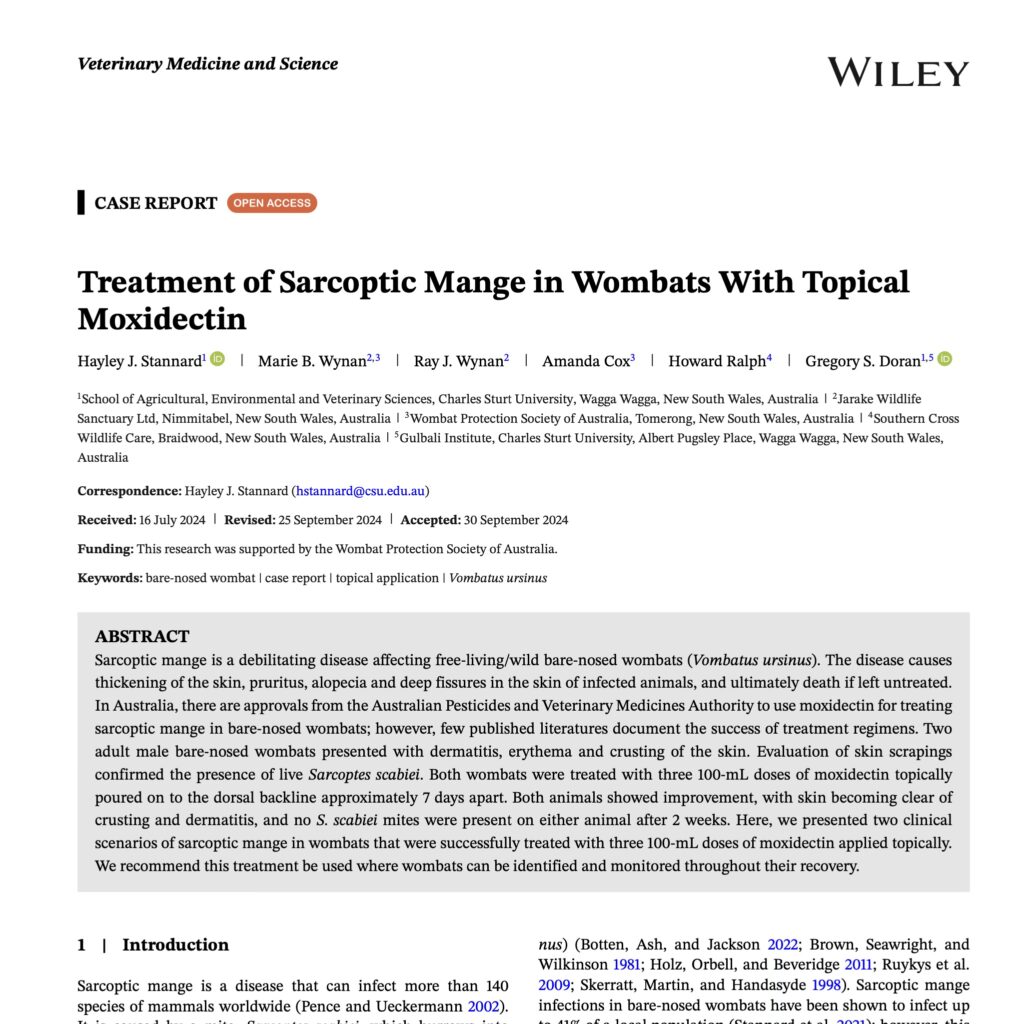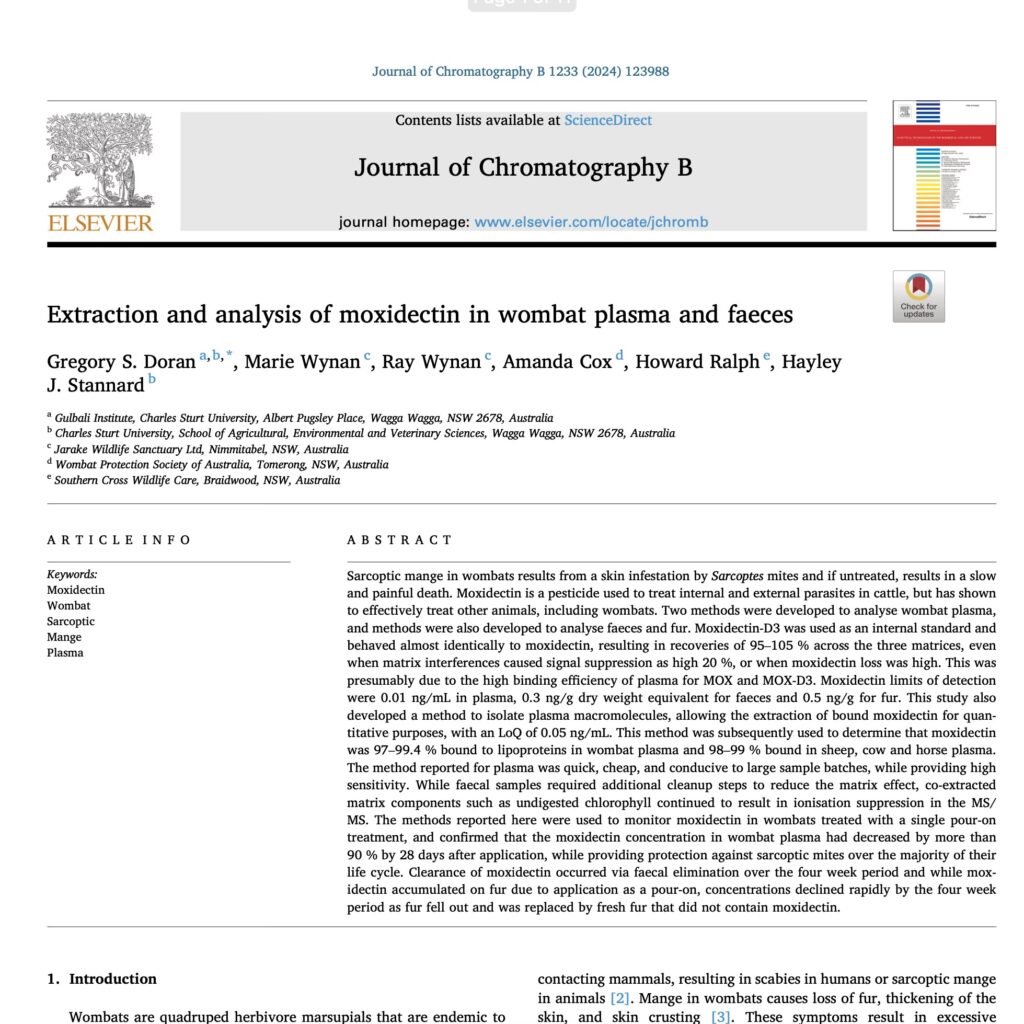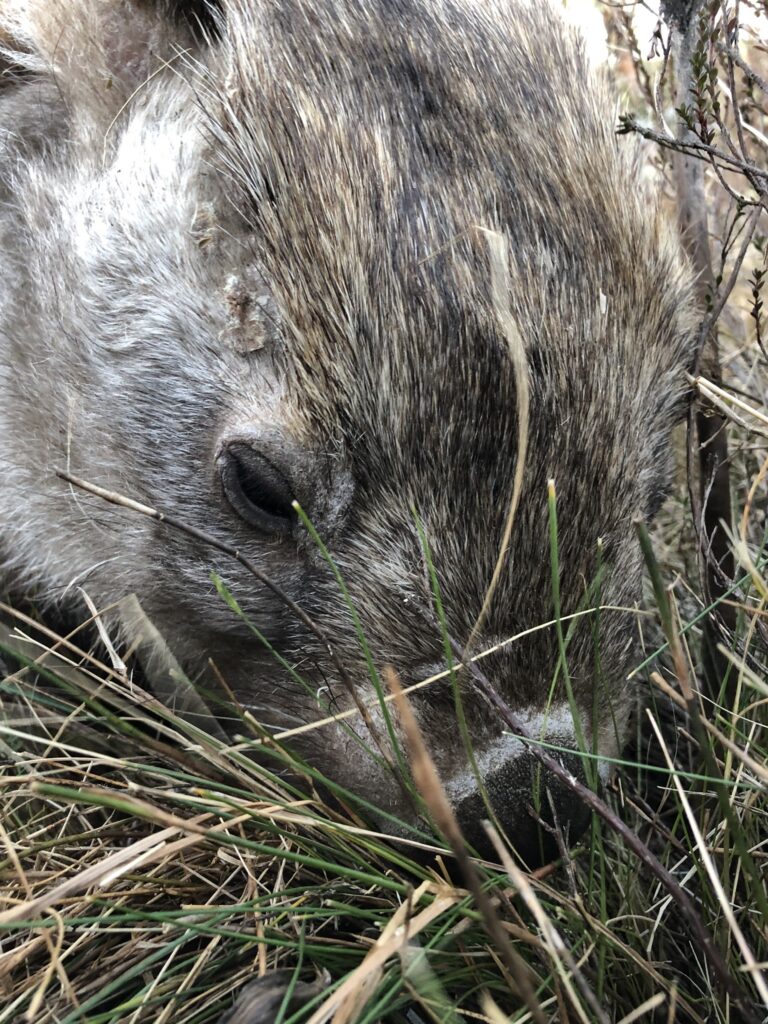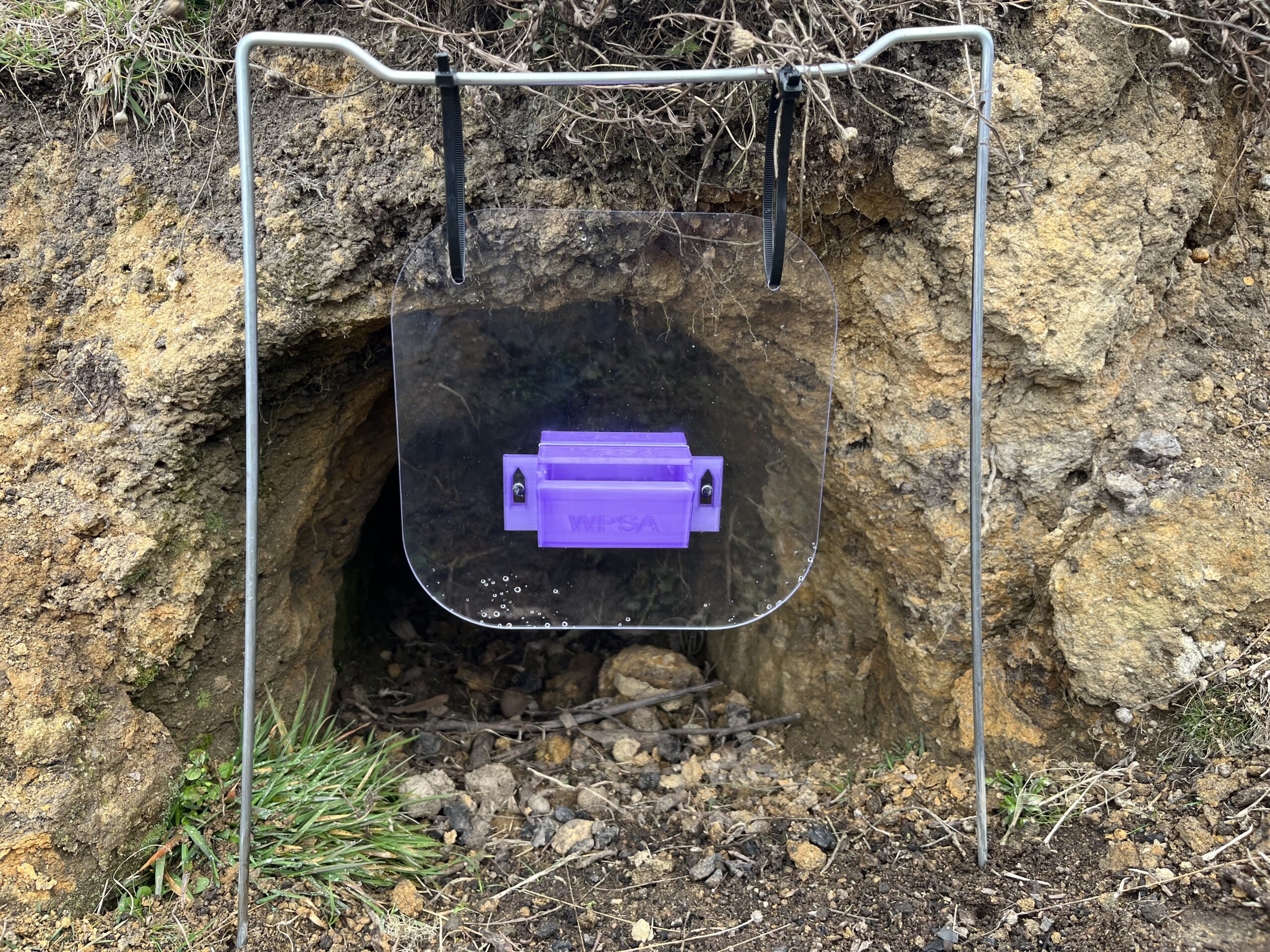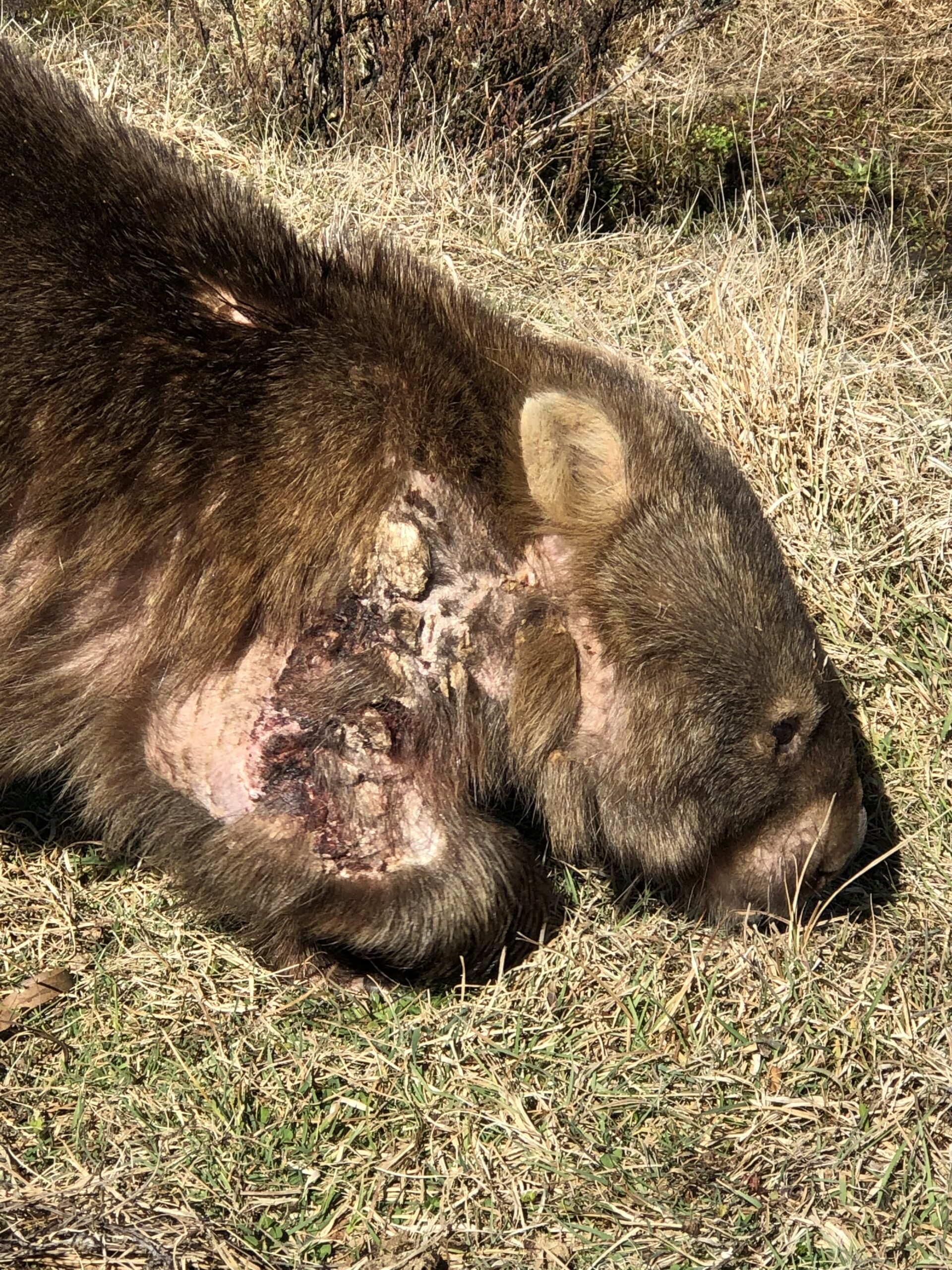Mange is one of the biggest threats to Bare-nosed wombats and can wipe out isolated colonies in just a few years. It is geographically widespread and affects thousands of animals. Mange in wombats is caused by an infestation of the mite, Sarcoptes Scabiei, the same type of mite which causes scabies in humans and mange in dogs. The female mite buries into the epidermis while depositing eggs as well as leaving her waste behind, causing intense itchiness which leads to thick scabby plaques, and flyblown fissures. Eventually the wombat will die a slow painful death. Leaving wombats with sarcoptic mange to die is unethical and likely to lead to more wombats dying from mange. We have been carrying out extensive mange treatment programs covering large areas of private property and state forest for decades and have now a good success rate with a treatment duration of only 30 days, with flexibility for different individual response.
After several years of operating a successful mange treatment program using Moxidectin, we undertook a research project in collaboration with Charles Sturt University, the Wombat Protection Society of Australia, and Southern Cross Wildlife Care Hospital. Our objective was to validate that administering more appropriate doses of Moxidectin remains the most efficient, secure, and prompt approach presently available for treating wombat mange in the field. We collected blood samples, hair samples, and faeces from wild wombats before and after Moxidectin application for almost 18 months. The pharmacokinetics of the samples were analysed at Charles Sturt University, resulting in groundbreaking outcomes.
See below video of what we did, how it was done and the ground breaking results. The peer reviewed papers can be downloaded via the links below the video:

